I've been a fan of strategy and role playing games ever since I was a kid. From chess to poker, Diablo to Final Fantasy, and Civilization to Settlers of Catan, I've always had an interest in playing and developing these systems. One of the main things I did in World of Warcraft was just tinker on the auction house. Buy low, sell high. I even had several mods that made the process easier. I've made a couple thousand USD selling these digital pixels.
Now, using blockchain as a foundation, we can usher in an entirely new paradigm. We can create games owned by the players. We can pay out unregulated cash rewards. We can lower the bar of entry for professional gamers from 1 in 10,000 to 1 in 10. A poker client that doesn't take a rake creates a system where 50% of all players are making money on average. This is the ultimate goal.
However, to get there, the games we create have to have substance. There needs to be enough strategy and skill involved to separate the the pros from the rabble. I think @drugwars can be the first game ever to accomplish these goals. It's already the first game I've ever seen that pays out a significant real money reward. All that's needed now is to create the strategy to go with it.

When I was playing Final Fantasy games something always seemed missing. There was never any environment tied to the combat system. It doesn't matter where you stand, and there is very little strategy in picking between a few abilities. The game mostly turned into a grind that reveals the story and eventually ends.
In the games that came after they added a front row and a back row. Use the back row for defense and the front row for attack and tanking. Still, this is very basic. Therefore, for a while now, I've been trying to think of a turn-based RPG battle system that has a board of sorts; an environment that affects gameplay and class abilities.

So far, I've come up with this:
Pattern Blocks.
Each shape represents a possible tile on the board to stand on. Depending on the areas and angles of the shapes, ability and attack effectiveness can be modified. For example, a tank might have better defense on a square with more area, so you might naturally want to move tanking classes to the hexagon in most situations (if one exists on the current map). I imagined sharper angles would give damage bonuses, simultaneously making the hexagon a bad square to deal damage from.
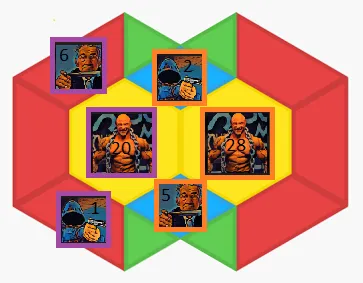
This crude representation shows how it might work on a foundational level. The look and feel of the actual front-end can be modified indefinitely.
Bouncers have taunt, so all of orange's units are taunted and can't do anything else until the 20 purple bouncers are dead. However, perhaps there is a game mechanic where if a hexagon is flanked by 3 characters it receives increased damage. The possibilities are endless. It all depends on how we want the game strategy to work.
Here are some example ideas of what possible classes in @drugwars might do:
Bouncer
 * Taunt (all adjacent units forced to attack this unit)
* Taunt (all adjacent units forced to attack this unit)
Knifer
 * Can attack two adjacent melee targets at once.
* Damage gets divided by the angle of the strike.
* Can attack two adjacent melee targets at once.
* Damage gets divided by the angle of the strike.
 https://apps.mathlearningcenter.org/pattern-shapes/
https://apps.mathlearningcenter.org/pattern-shapes/
Take this scenario for example. The knifer on the right does far less damage than the knifer on the left because the angle between the targets is much wider. If the Knifer's damage gets divided by the angle multiplier, the one on the left is getting divided by 30, while the one on the right is getting divided by 150.
Base 30 degrees
30 degrees is the least common denominator with pattern blocks, so 30 degrees would be an angle factor of one while 150 degrees would be an angle factor of 5. Sixty degrees is a very common angle of pattern blocks and is found in 3 of all 6 of the shapes.
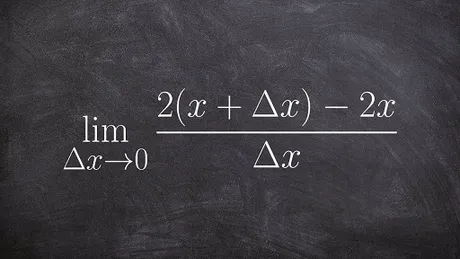
Skip Boring Math (begin)
HEXAGON
- Area of 6 triangles.
- Six 120 degree angles
SQUARE
- Four 90 degree angles.
TRIANGLE
- Area of itself.
- Three 60 degree angles
TRAPEZOID
- Area of 3 triangles.
- Two 60 degree angles.
- Two 120 degree angles.
- Only shape with a double length on a side.
RHOMBUS (fat)
- Area of 2 triangles.
- Two 60 degree angles
- Two 120 degree angles.
RHOMBUS (thin)
- Two 30 degree angles.
- Two 150 degree angles.
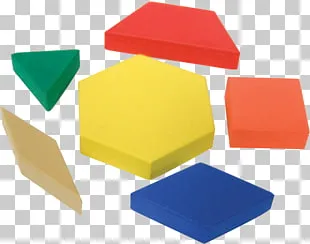
You'll notice that I measured the area in relation to one equilateral triangle. Normally most people would anchor the edge of pattern block to a size of one. However, there is no strategy there, because every shape has the same sized edge so that they fit together. Therefore, it makes more sense to anchor the scale of this system to one triangle, because four of the six shapes are directly created by combining triangles together.
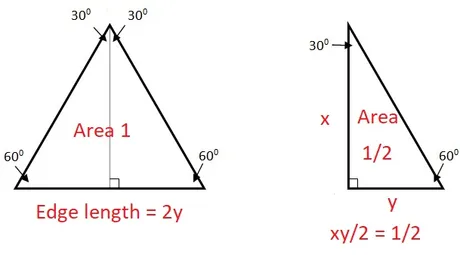
This area anchor creates an edge length of 1.5167:
xy = 1 (area anchor) tan(60) = 1.732 x = 1.732y y = SQRT(1/1.732) = 0.7598 2y = 1.51967 (edge length)
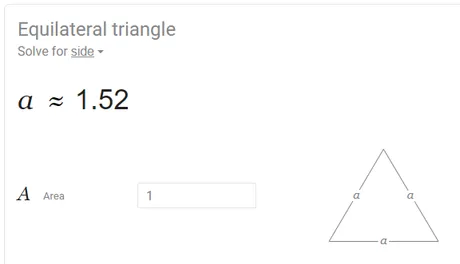
The edge length is largely irrelevant except for calculating the area of the remaining two shapes.
- The area of a square is around 2.31 = (1.52^2)
- The area of a thin rhombus is 1.155 = sin(15)1.52 * sin(75)1.52 / 2 * 4
End Boring Math
Why does any of this matter? Using a system like this I believe we can create turn-based strategy models that are very easy to learn and very hard to master. Anyone can walk around the tiles and attack their enemy. However, being efficient in combat will prove difficult in the face of an intelligent opponent.
If we can make a system of strategy that isn't trivial, all of the value of the game will flow into the hands of real players and bots will get wiped clean until they get smart enough to play the game. This might take quite some time and allow turn-based games like this to go viral. This idea is an extension of my CAPTCHAIN plan where mini-games would be used as CAPTCHAs to keep bots out and value within the gaming community.
Significance of Area an Angles
I think in general bigger area squares should provide more defense and be harder to attack from. Sharp angles or small areas would give damage bonuses. In general 60 degrees would be the normal angle to attack from. 30 degrees would give a bonus and 120 would blunt the attack.
Area of effect (AOE) damage
Area of effect damage hits more than one target. In the context of this system I think AOE would be more effective on tiles with smaller area that are more clumped together.
Melee damage
Melee damage occurs across the edge with no angle to consider. In these cases area should be used to calculate attack bonuses. This would make the green equilateral triangles the strongest places to melee attack from because they have the least area of all the shapes.

Ranged damage
A unit like the Gunman would have a range of +1. This means they can attack through a point of contact on to the other side of a shape as shown. However, this is where the angle matters. The purple gunman on the left is firing through a 120 degree angle, making it weaker. The orange gunman on the right is firing through a 60 degree angle, making it a stronger attack (assuming it wasn't being taunted by the bouncer).
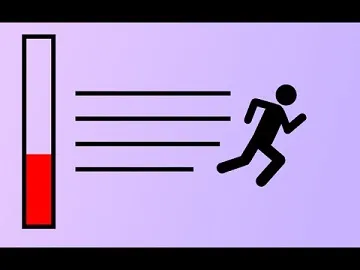
Movement/Attack Speed
Each class has one or more stamina bars. Energy can be consolidated into a single bar. This would mean moving around the board would drain your ability to do damage.
In the system I'm developing their would likely be two bars:
- one for movement.
- one for attack.
The default setting for units would be they can do one thing per turn. Say it takes 1000 points to move and 1000 points to attack. The average class would have a stamina bar and attack bar with a maximum value of 1000 that also regenerated 1000 per turn. However, these numbers could be tweeked for different classes.
A ninja might have a movement stamina of 4000 but only a regeneration of 1000. This would allow them to sprint to a location quickly and strike the back line.
A hitman might have the ability to ignore taunt and have an attack bar of max 2000. This would allow them to stand next to bouncers and avoid taunts while double striking a critical target.
First Strike
Fast classes (example: ninja/hitman) might have first strike (like Magic The Gathering) and will attack and kill units before they can be attacked that turn.
A bomber might have higher effectiveness against huge clumps of units. Say someone is stacking 1000 bouncers, bombers would shred them in short work because they are so clumped.
A sniper would be physically weak but be able to strike units at a range of 2.
Banding
Units with the "Banding" ability sink or swim together. They either all die at once or all live to keep attacking and do full damage. Throw too many of these units into your composition and they will surely be decimated by bombers.
And so on, and so forth
Well, this is my idea for a combat system within a turn based environment. I'm brainstorming it for a project that I want to complete, but I thought I'd adapt the idea to @drugwars on the off chance that it actually might be used.
I think a system like this puts turn-based strategy games in a position to create a thousand times more strategy than it had previously. When we connect these systems to blockchain and start paying people real money things get very interesting.
Paid to Develop
For example, not many people here can code apps for the blockchain, but how many of us could create pattern block maps for a game like @drugwars? How many of us could think of skills and the advantages those skills would have inside this system of strategy? I think we have a unique opportunity to lower the bar of development to the average Steemian and start creating scenarios using proof-of-brain concepts.
We can create puzzles that dish out real rewards or are simply designed to keep bots off the platform. How does one kill 100 bouncers with 3 gunmen and 1 bomber? Solve the puzzle, earn an SMT.
Speaking of second-layer tokens. @drugwars is in a very unique position to create inflation in a way never before possible. Imagine if they just added 10,000 tokens to the daily prize pool. They can literally create money out of thin air, and if those token have in game value people will value them (perhaps even higher than Steem itself).
Conclusion
We haven't even scratched the surface of the blockchain yet. Imagine a world where someone is making $30,000 a year on a game like @drugwars without any sponsorships or advertising. Those days are coming soon™.
Return from Turn-Based Pattern Block Combat + @drugwars Adaptation to edicted's Web3 Blog
